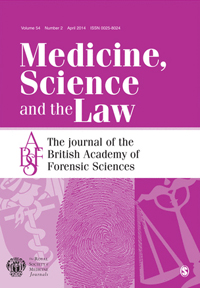Huge disparities between the decisions made by coroners

Fri, 04 Apr 2014 13:49:00 BST
Research calls for national Coroners’ Service in England and Wales
GOVERNMENT plans to overhaul the centuries-old coroner system in England and Wales have been bolstered by the findings of a leading police officer who has become a PhD researcher at the University of Huddersfield. Detailed analysis by ex-Detective Chief Superintendent Max Mclean has shown that there are huge disparities between the decisions made by coroners in differing districts, with the troubling discovery that the deaths of women are considerably less likely to be investigated at an inquest.
The result is a “postcode lottery”, claims Mr Mclean, who calls for a fully-fledged National Coroners’ Service, overseeing a reduced number of districts, headed by fully-professional coroners. This means that he backs an announcement made by the Justice Minister that the coroner system will be reformed, with new national standards drawn up, but feels the reforms could go further. His statistical analysis – now the subject of two academic articles - will reinforce this process.
Mr Mclean – an ex-Head of West Yorkshire CID – acknowledges that there is a tension between retaining the independence of those who administer justice and the need for greater consistency between districts.
“But from my research is reasonable to infer that a bereaved family would receive a different outcome in two different coroner areas, where their loved had had died of identical facts presented to each coroner,” he said.
Coroner consistency – The 10-jurisdiction, 10-year, postcode lottery?
Mr Mclean has published a new article in Medicine, Science and the Law, which is the official journal of the British Academy for Forensics Sciences. Entitled “Coroner consistency – The 10-jurisdiction, 10-year, postcode lottery?”, it builds on findings reported in an earlier article - in the Journal of Clinical Pathology - based on data collected from the Ministry of Justice that detailed all inquest verdicts for the past 15 years and all deaths reported to coroners over a ten-year period.
This earlier research showed massive disparities between the 144 jurisdictions in England and Wales. The rate of deaths reported to coroners by medical practitioners ranged from 12 per cent to 87 per cent. Mr Mclean attributes this to the varied attitudes and working practices of coroners plus traditions entrenched in different jurisdictions.
 Now Mr Mclean, for his latest article, has refined his research by concentrating on ten coroners’ districts in England, all which have near identical caseloads and numbers of inquests. The districts vary demographically – ranging from Norfolk to South London - but Mr Mclean, having considered population and deprivation figures, does not believe that this is a factor in his findings.
Now Mr Mclean, for his latest article, has refined his research by concentrating on ten coroners’ districts in England, all which have near identical caseloads and numbers of inquests. The districts vary demographically – ranging from Norfolk to South London - but Mr Mclean, having considered population and deprivation figures, does not believe that this is a factor in his findings.
He discovered that between the ten districts, over the course of ten years, there were substantial variations in reporting rates to the coroner. The proportion of deaths reported varied from 34% to 62% . Also, when cases did proceed to inquest, there was considerable variations between the districts in the range of verdicts – such as accidental death, death from natural causes, suicide or narrative verdict.
“The chief cause may be the different viewpoints of coroners, leading to different outcomes” said Mr Mclean. “Coroners will choose different verdicts according to local practice, so in some areas what might be deemed an accidental death might be death from natural causes elsewhere. A near identical caseload is no guarantee of similar decision making.”
Personal viewpoint of coroners
Mr Mclean also found evidence that coroners would, to varying extents, record narrative verdicts as a substitute for suicide verdicts, leading to a confused national picture of suicide.
The only area of consistency discovered by Mr Mclean was that in all of the ten jurisdictions, male deaths were more likely to be reported to the coroner – 48 per cent as opposed to 37 of female deaths. Also, more reported male deaths proceeded to inquest – 16 per cent as opposed to nine percent - and more men were deemed to have died unnaturally (six per cent male, two per cent female).
More research is needed to explain this disparity, says Mr Mclean. A possible factor is that national statistics do not include an analysis of age in relation to death.
“Women do, on average, die older than men. However coroners are at least vulnerable to the suggestion that the deaths of women are not perhaps investigated as thoroughly as those of men. This may be because of the ancient nature of the coroner’s jurisdiction and the way in which investigative techniques have developed in the coronial system.
“ There is also some evidence that coroners individually favour particular verdicts according to whatever sex the deceased person is,” added Mr Mclean.
His new article argues that services such as the criminal courts or the Crown Prosecution Service are subject to extensive national guidance in order to constrain idiosyncratic decision making, so there is no reason why this should not apply to the process of death investigation and classification.
This leads Mr Mclean to support moves towards a reformed coroner system, building upon that announced in 2013 by Justice Minister Helen Grant, with a goal to place the needs of bereaved families at the heart of the system.








